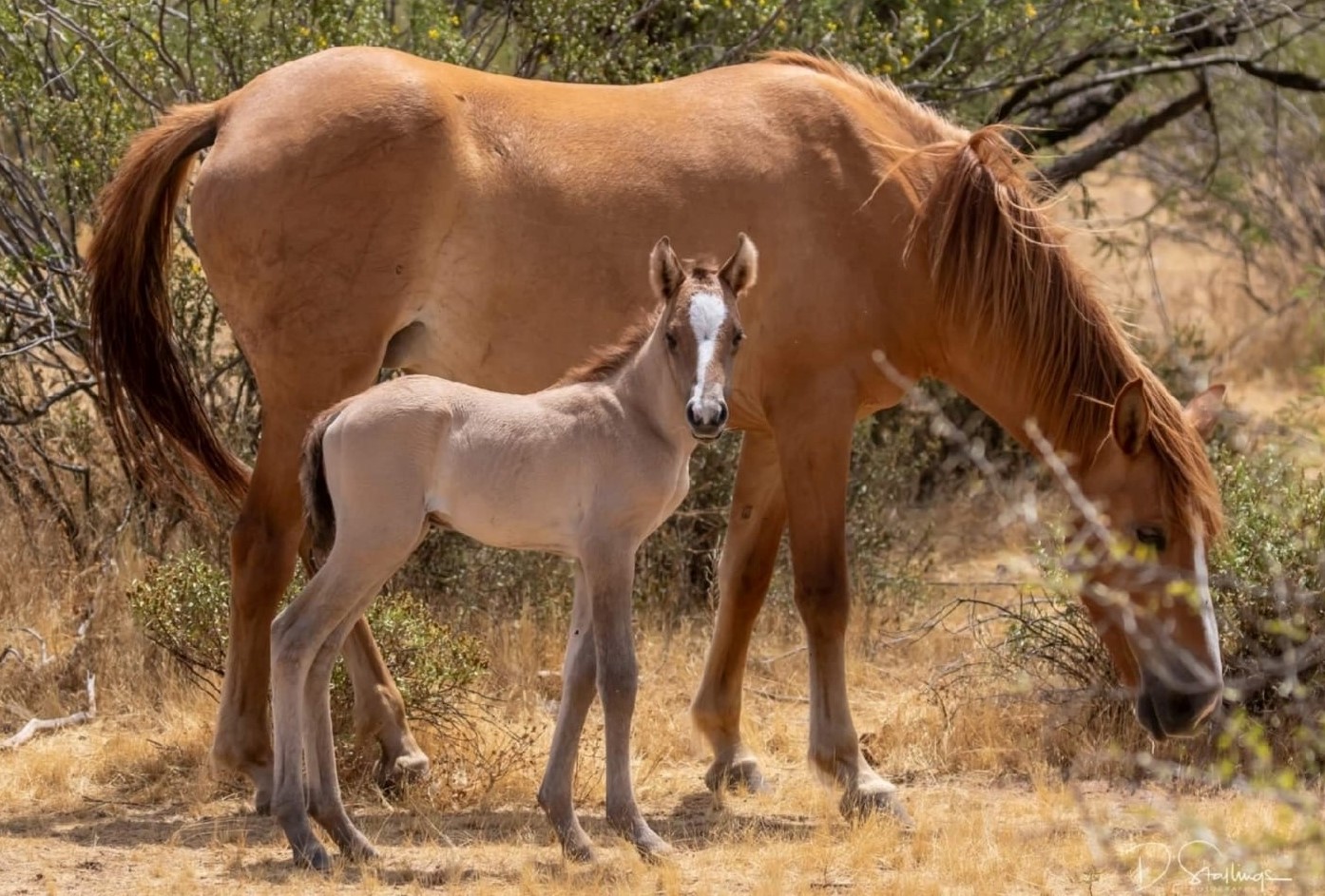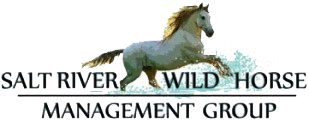
2019 SRWHMG Herd Health Report
At the current time the Salt River herd is in excellent condition with body scores of predominantly 4’s. Our supplemental feed program has greatly contributed to the overall herd health since the drought of 2018 when the health of the entire herd was in jeopardy.
Forage conditions
The year of 2019 started with good forage until May of 2019 by which time it had dried up due to dry conditions again. The year brought almost no precipitation until the recent good rains in December and January. As a result, the range is finally trying to recover. As part of our management we monitor the range and we are seeing a lot more weeds this year; the actual grasses are only a half inch tall right now. The mustard weeds are toxic to horses in large quantities and we have monitored a few colic cases. (not fatal) The abundance of weeds is due to the previous drought which has killed most of the perennial grasses and left fewer viable seeds of the annuals. Our supplemental feed takes some pressure off the range (because horses are less hungry) and we are hopeful that the range will come back the way it used to be.
We are proud of the success of our feed program because we know we can sustain the entire herd even through the worst of times, but we are also sad about our feed program and would rather never have to feed wild horses. It is very expensive, and politically it is not a good thing to advertise it. It is very bad luck that we have come upon such hard times.
Removals
When wild horses get too skinny everyone starts to scream roundup. We are glad that we have been able to prevent that so far and we want to reiterate that it is still cheaper to feed wild horses in the field than it is to round them up and feed them for the rest of their lives. We are grateful to both governing bodies, the AZDA as well as the Forest Service for being patient with the birth control program and giving us time to reduce the herd numbers humanely without removals.
How do we do it
This year we reduced the amount of feed stations to just four, in the very safest locations and monitored that all bands had been able to find them. We also enlarged the feed stations which made it possible for every horse to get their share. We have gone through 10 semi-loads of certified weed-free alfalfa in 2019. We adjust the protein we provide based on the condition of the horses.
The amount of hay we provide is still considered only supplemental. During the scarcest conditions we fed 5 times per week and currently we are feeding only on an as needed basis. If you fed your domestic horse only 5 times per week, he would die. The horses still have some natural resources available like the mesquite trees and the river eelgrass. However with the upcoming reduction of their habitat, even less forage and less eelgrass will be available. The south side of Bush Hwy is a very important source of forage and we hope we do not lose that habitat. The lowest 4 miles of the river is the most valuable for river eelgrass, but we are loosing it.
Habituation
The horses get along remarkably well at the feed stations as long as the hay is spread out wide enough. Our feed team is usually 10 to 15 people strong and take the hay out in wagons to each feed station. We get in and out immediately so that horses do not associate the hay with people. Because there are less feed stations and the horses know where they are, you could come upon a lot of horses there at one time. We ask that you stay on the outside of the feed station and not stand in the middle of the horses. Please do not pick up feed and try to hand it to the horses. Most people have been very respectful and are gracious to thank us each time our volunteers are in the field. Horses do go back to their normal routine after a couple of hours and revert back to their exact same migrating patterns that we have recorded for years.
Currently we have paused our feed program and are waiting to see what the range does. We only use it for diversionary purposes and on an as needed basis for needy bands right now. (For example Shadowfax has not gained all of his weight back yet)
Even during the worst of times we provided for the entire herd of Salt River wild horses. Not one horse died of starvation or dehydration during the terrible drought of 2018 while elsewhere in Arizona horses as well as wildlife were dying. This is mare Lily, with her 2018 foal in top picture and the same mare with her 2019 foal this past September. In 2020 she is getting a break from having a foal due to our birth control program.
Please stay tuned for more of our year end report (it would be too long to post all at once) and news on our birth control program.
We want to thank you for your support during these very trying times. We are still fighting for these horses every day. To donate please go here.
Thank you.

